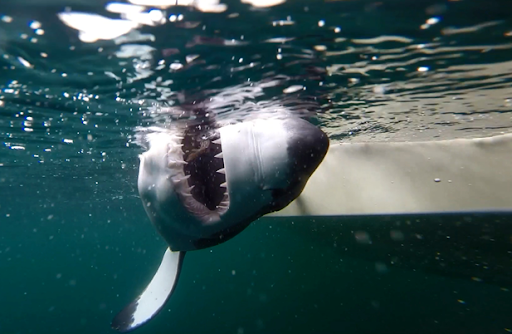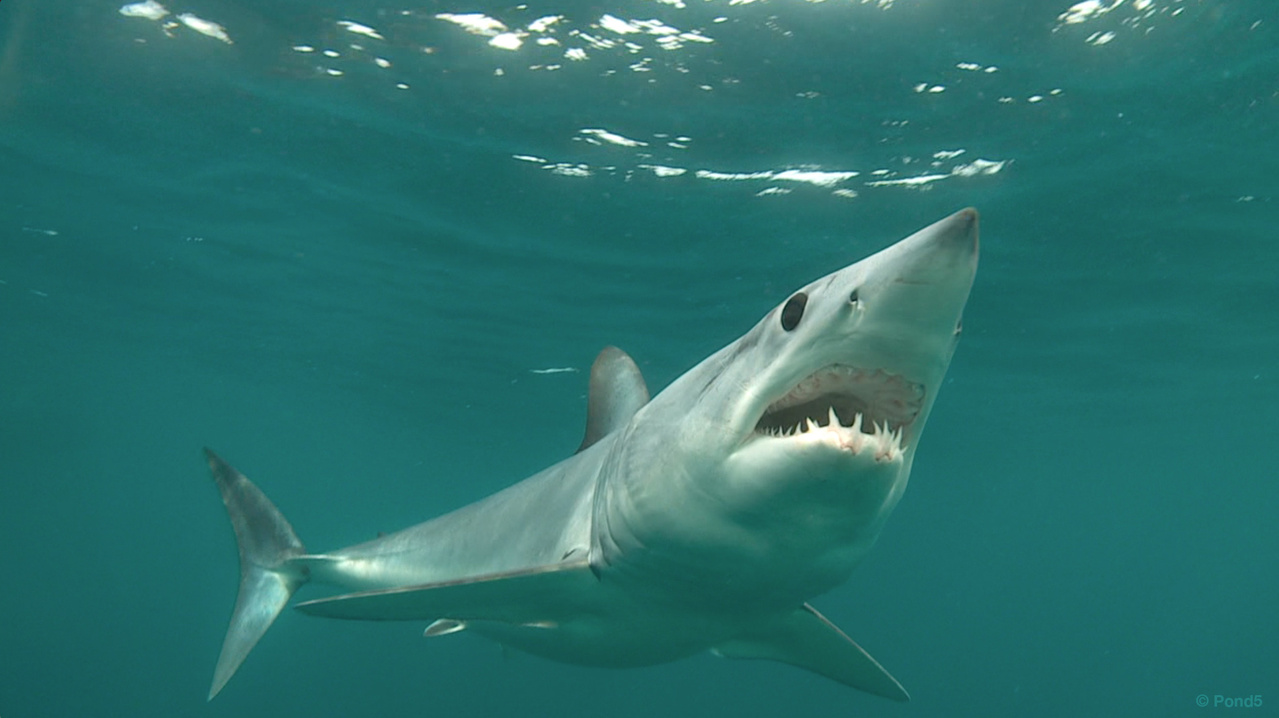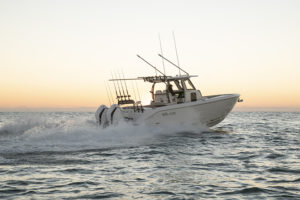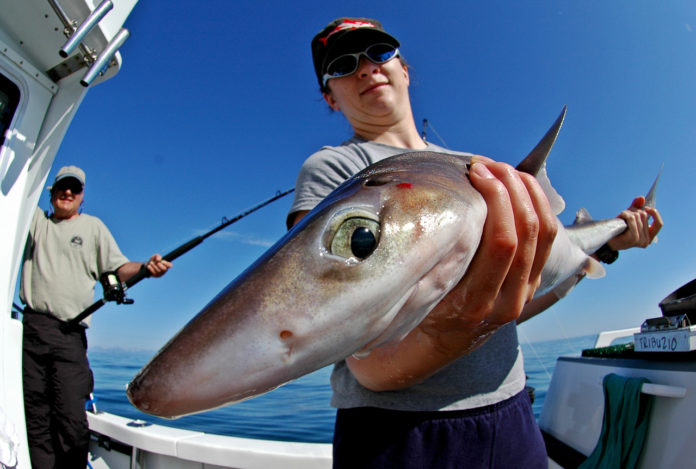Sharks aren’t really the “dangerous eating machines” as portrayed in the movies, but instead are important members of coastal ecosystems that can provide great catch-and-release sport for small-boat anglers.
By Barry Gibson
Human beings seem to have a fascination with sharks. We shoot movies about them, wear jewelry made from their teeth, and make villains of them in books and magazines.
And, we fear them. We conjure up visions of pearl-white, razor-sharp triangular teeth gliding silently in the murky depths, ever ready to clamp down on the arm of an unsuspecting swimmer … or ready to grab our ankle and pull us under at the first opportunity, drowning us and then coming back to feed. Yikes!
Most of our trepidation is completely unfounded. In reality, sharks are simply animals like us who are trying to make it through another day. They need some food, a clean environment, and a little peace and quiet. They don’t cruise around looking for unsuspecting water skiers, nor do they attack boats and helicopters. They’re not looking for a fight.

Eating Machines
A lot of us think sharks want to eat us for dinner. Not true. Most sharks only eat fish smaller than they are, and will not overeat. Some, like the lemon shark, eat only once every three to four days. Although there are billions of sharks out there in our oceans, only 100 or so people are attacked each year. And further, biologists don’t think hunger is the reason for these attacks.
Sharks and Swimmers
There are millions of sharks off the U.S. coastline, 24 hours a day. Many swim right into the surf to feed on fish. The reason more swimmers aren’t attacked is that few sharks (the great white is an exception) are capable of eating anything as large as a college student.
Shark Repellent
Forget it. There’s no miracle on the market. Some detergents will work to a degree, but you’ll have to squirt the shark right on the snout.
Shark Vision
Many sharks hunt with their eyes. Sharks have color vision, and can see in lower light than we humans can, such as in murky water. But, sharks don’t always see things as accurately as we do, and can make mistakes.
Electrical Sensing
Sharks can detect electricity as low as one-billionth the power of a flashlight battery. This is probably one way that helps them feed. In the open ocean, sharks can sense north, and electrically sense the speed and direction of currents.
Medical Benefits
Sharks have powerful immune systems. Scientists have discovered a substance in sharks that will prevent cancer in laboratory rabbits. Shark corneas have been transplanted into humans, the only cure for certain eye diseases.
Shark Reproduction
Sharks must be several years old, at least, before they can reproduce. The mother shark creates a few, very well-formed babies instead of the thousands or millions of eggs that other types of fish produce. This style of reproduction makes sharks very susceptible to overfishing.
Shark Evolution
Sharks have been around for 400 million years. Actually, they are not really fish, but are classified as “fish-like vertebrates.” When the earth was dominated by dinosaurs, sharks were the most prevalent fish-like creatures in the sea, and there were thousands of species. Today there are only 18 species.
Shark Research
It goes on all the time. Biologists implant radio transmitters in sharks and monitor their travels. Another discovery was that, at least for lemon sharks, the babies live separately from the teenagers, which live separately from the mature adults.
Why We Need Sharks
Sharks are “apex” predators at the very top of the food chain. If we took away all the sharks, their prey (smaller fish) would probably multiply to the point where they would die off from overcrowding, disease, or starvation.
The Threat to Sharks
Sharks are in danger because shark fishing is uncontrolled in many parts of the world. Commercial fishermen kill millions of sharks each year. Some progress has been made in managing shark fisheries, especially in the U.S., yet many countries continue unregulated harvest of sharks, in some cases just for their fins.

viability of the species.
Sport Fishing for Sharks
Sport fishing for sharks is immensely popular along the three U.S. coasts. A lot of new rules have been implemented in the past several years to protect some species altogether (such as the prohibition on retaining any great white shark) and to enhance the survivability of sharks that are released by anglers. Requirements that only mild steel circle hooks can be used, which tend to catch the shark in the corner of the jaw rather than in the throat or gullet where it can impede feeding and perhaps be fatal. In addition, there are minimum sizes for some species of sharks that are brought in to be used for food, which allow the shark to reproduce one or more times before being harvested.
Thankfully, the days of catching a shark and bringing it back to the dock just to hang it up for a photo-op are pretty much over as more and more shark anglers have become educated as to how important sharks are to marine ecosystems. Sharks that are not to be retained for food should be quickly released at boatside. If the hook cannot easily be removed, just clip the leader as close to the hook as safely possible. Never try to club or “quiet down” a shark that is to be released, as contrary to popular belief, sharks cannot endure much stress and may die shortly thereafter.
Shark fishing is great sport, and in most areas is well within the reach of center-console anglers, with productive grounds sometimes just a mile or two offshore. A good 30- or 50-pound class shark rod-and-reel outfit can be purchased for less than $200. If you add an inexpensive fighting belt, some wire leader material, a few circle hooks, leather gloves, and a pair of wire cutters, you’ll be good to go.
Finally, if you do want to target sharks, you will need a National Marine Fisheries Service Highly Migratory Species (HMS) Angling Permit with a Shark Endorsement. To obtain the endorsement you will need to watch a short, one-time, online video on shark identification and rules, and then take an online quiz. I’ve done it, it’s very easy. The cost of the permit is $26 annually, and the shark endorsement is free.
For more information visit www.hmspermits.noaa.gov



